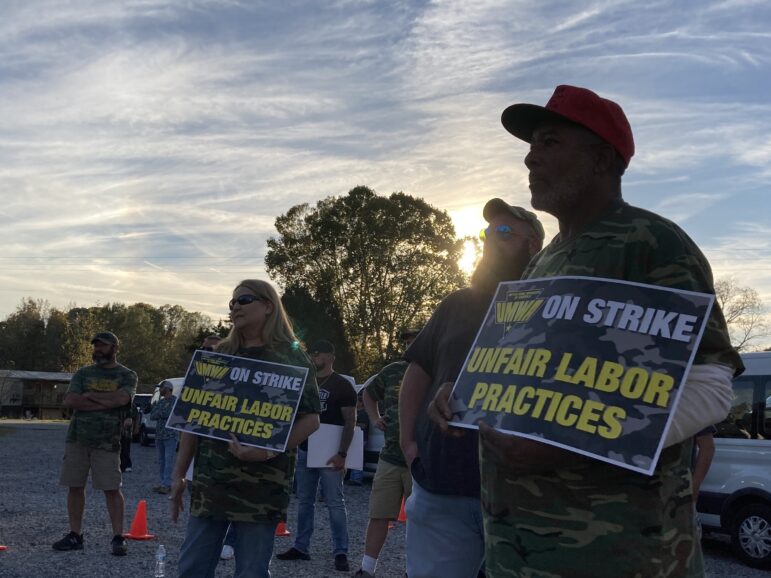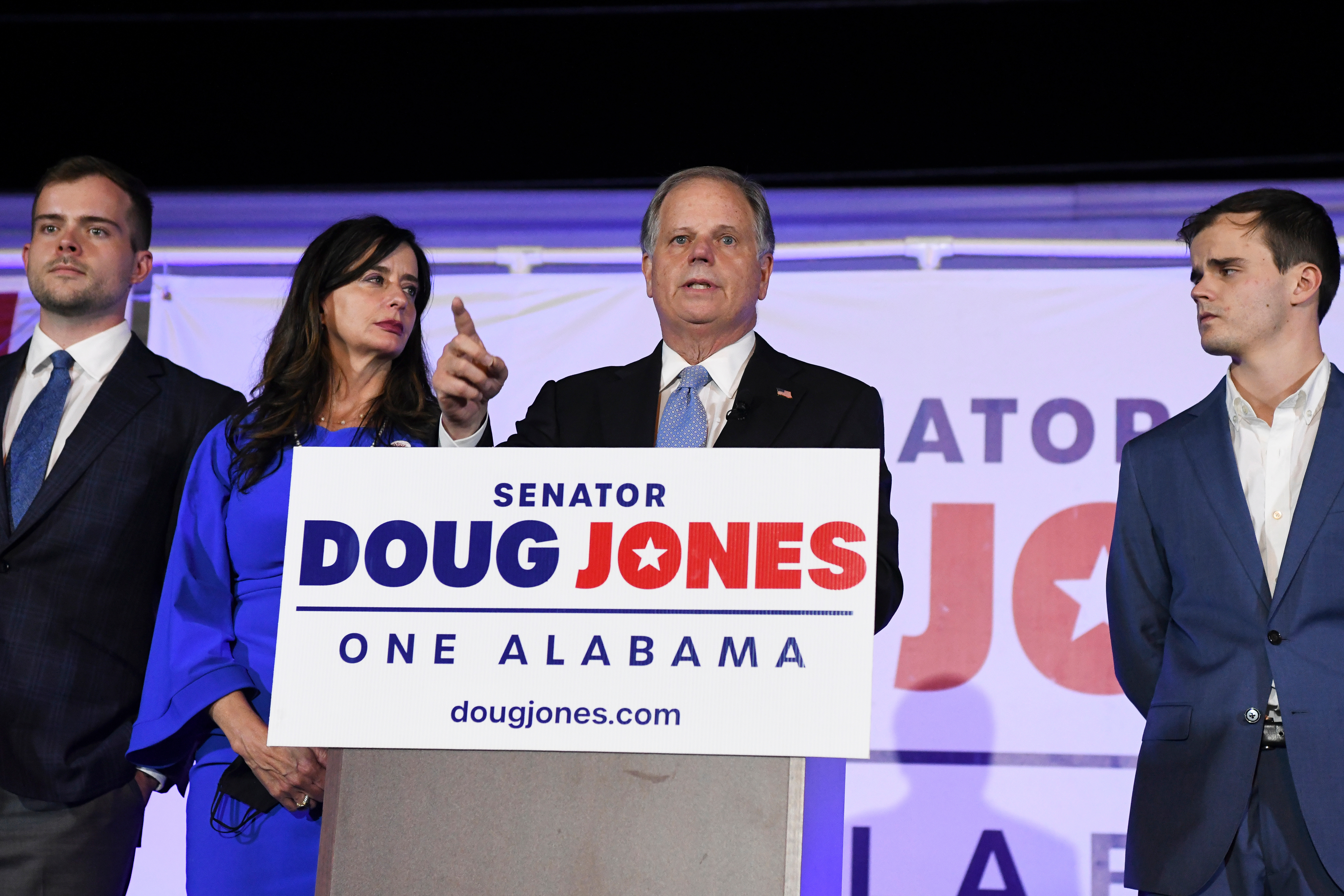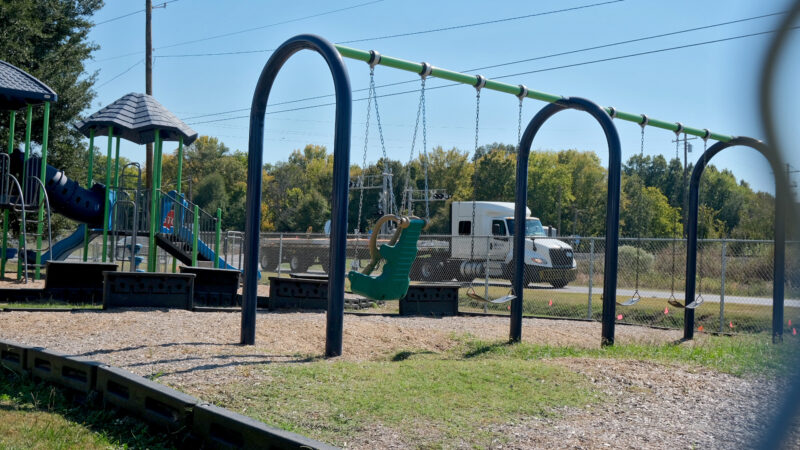Alabama coal miners begin their 20th month on strike
Antwon McGhee is one of about 500 Warrior Met Coal miners in Brookwood, Ala., who have been on strike for 20 months.
Hundreds of coal miners in Brookwood, Ala., reached a milestone Thursday: They’ve spent 20 months on strike.
That’s well past the six-week average for strikes, according to Bloomberg Law. The miners believe it’s the longest strike in Alabama’s history.
They have continued demanding their employer, Warrior Met Coal, restore the pay and benefits that were cut in 2016 as a cost-saving measure to keep the mines from shutting down.
Out of the 900 miners who started the strike a year and a half ago, 500 remain, according to United Mine Workers of America. And many of them say, despite missing their six-figure salaries, they’re doing just fine. They stick with a classic union catchphrase — they’ll last “one day longer” than the company.
Warrior Met has also remained resolute. With negotiations stagnant, the mines have kept operating and earning the company millions in profit.
Here’s how the miners — and the company — have survived the strike.
Strikers lean on a support system, an understanding of history and anger
If there’s one group of American workers used to labor battles, it’s miners. Consider the literal gunfights in the West Virginia mountains a century ago, or the 50,000 coal miners striking across 11 states during the Pittston Coal Strike of 1989. Consider too that coal is a feast-or-famine industry, and miners know the importance of saving up.
“Every old coal miner tells you that you prepare for the next day because you don’t know what to expect for that next day,” said Antwon McGhee, a striking Alabama coal miner.
Of course, many miners’ savings have dried up by now. That’s where having a strike-seasoned union, like the United Mine Workers of America in this case, helps.
The union knows it has to take care of those most vulnerable, said Kate Bronfenbrenner, director of Labor Education Research at Cornell University — like supporting a young miner with a mortgage and a new baby, or an older miner with health issues and higher medical bills.
“They work as a community to do that,” Bronfenbrenner said.
Every two weeks, the striking miners rally outside of a local union hall in Brookwood before shuffling inside to pick up $800 checks. Around the one-year mark, the United Mine Workers of America said it had given out $20 million to workers.
Union dues collected from miners across the country have been bolstered by donations from other unions and individuals. Together, they’ve built up a war chest that could enable the strikers to remain on the picket line for years, according to one local union leader.
“Strike checks is how I’m making it,” said Brian Kelly, Local 245 UMWA president. “There’s no doubt about it.”

Community stands behind the strikers, offering donations and jobs
Locals also are helping the miners out, whether by keeping the local food pantry stocked, providing backpacks for school or toys as Christmas approaches.
But perhaps the most helpful support has come in the form of side jobs. Thanks to the tight labor market, strikers have found work at nearby strip mines and a Mercedes plant. The money’s usually nothing close to what they made before the strike, but combined with the strike checks, it’s enough to cover at least some bills.
McGhee has taken on plumbing and home remodeling work for his friends and family. They could have hired professionals, he said, but wanted to make sure the check went to him. He said that matters more than the money.
“You can go out and make the money,” McGhee said. “But without that morale and mental support you can’t make it.”
Beyond that, the miners are also fueled by old-fashioned anger — at the strikebreakers crossing the picket line and at Warrior Met’s refusal to give them the pay and benefits they want.
“They’re holding out on us on purpose and not giving us the contract we deserve,” McGhee said of the company. “I think it’s evil. Purely evil.”
Warrior Met declined to comment for this story.
The anger has backfired at times. The National Labor Relations Board fined the union $13.3 million for damages, in part for violence on the picket line. The union challenged that amount, and the NLRB agreed to drop it to $435,000. During a recent rally, union president Cecil Roberts called for nonviolent civil disobedience.
Soaring steel costs have added to Warrior Met’s bottom line during the strike
The goal of a strike is to put pressure on an employer by hurting them where it counts — their bottom line. Enough financial pain from work stoppages will lead a company to giving into worker demands, the idea goes.
But not when the company’s enjoying record profits.
Warrior Met Coal reported nearly $100 million in net income between July and September — a significant jump from the same time last year. It estimated the strike had deflated its earnings by about $7 million during the same time – a dent to the company’s profits.
The metallurgical coal mined by the company isn’t used for energy, but to make steel. Even though steel prices have been declining, which many miners believe will force Warrior Met to negotiate, they remain high.
“The economy has been in their favor,” said Greg Freehling, a Michigan State University adjunct professor who used to be the director of labor relations for the aluminum maker Arconic. “Anytime the company’s in a position where they’re making money…it gets a little bit easier to weather these sorts of things.”
Warrior Met fills jobs with out-of-state workers and strike breakers
The high price of steel right now wouldn’t mean much if Warrior Met couldn’t find workers to extract that coal.
Some miners have crossed the picket line, simply because giving up a six-figure salary for more than a year-and-a-half is tough. And miners from West Virginia and Pennsylvania volunteering for the union said they’ve seen Warrior Met recruiting workers in their states, which have plenty of former coal miners thanks to the decline of coal jobs across the country.
Freehling said the fact the company has been able to operate for so long with its current workers is a bad sign for the union – and a clear sign that the stalemate will last well beyond 20 months.
9(MDA2ODEyMDA3MDEyOTUxNTAzNTI4NWJlNw004))
Former U.S. Sen. Doug Jones announces run for Alabama governor
Jones announced his campaign Monday afternoon, hours after filing campaign paperwork with the Secretary of State's Office. His gubernatorial bid could set up a rematch with U.S. Sen. Tommy Tuberville, the Republican who defeated Jones in 2020 and is now running for governor.
Scorching Saturdays: The rising heat threat inside football stadiums
Excessive heat and more frequent medical incidents in Southern college football stadiums could be a warning sign for universities across the country.
The Gulf States Newsroom is hiring an Audio Editor
The Gulf States Newsroom is hiring an Audio Editor to join our award-winning team covering important regional stories across Mississippi, Alabama and Louisiana.
Judge orders new Alabama Senate map after ruling found racial gerrymandering
U.S. District Judge Anna Manasco, appointed by President Donald Trump during his first term, issued the ruling Monday putting a new court-selected map in place for the 2026 and 2030 elections.
Construction on Meta’s largest data center brings 600% crash spike, chaos to rural Louisiana
An investigation from the Gulf States Newsroom found that trucks contracted to work at the Meta facility are causing delays and dangerous roads in Holly Ridge.
Bessemer City Council approves rezoning for a massive data center, dividing a community
After the Bessemer City Council voted 5-2 to rezone nearly 700 acres of agricultural land for the “hyperscale” server farm, a dissenting council member said city officials who signed non-disclosure agreements weren’t being transparent with citizens.









